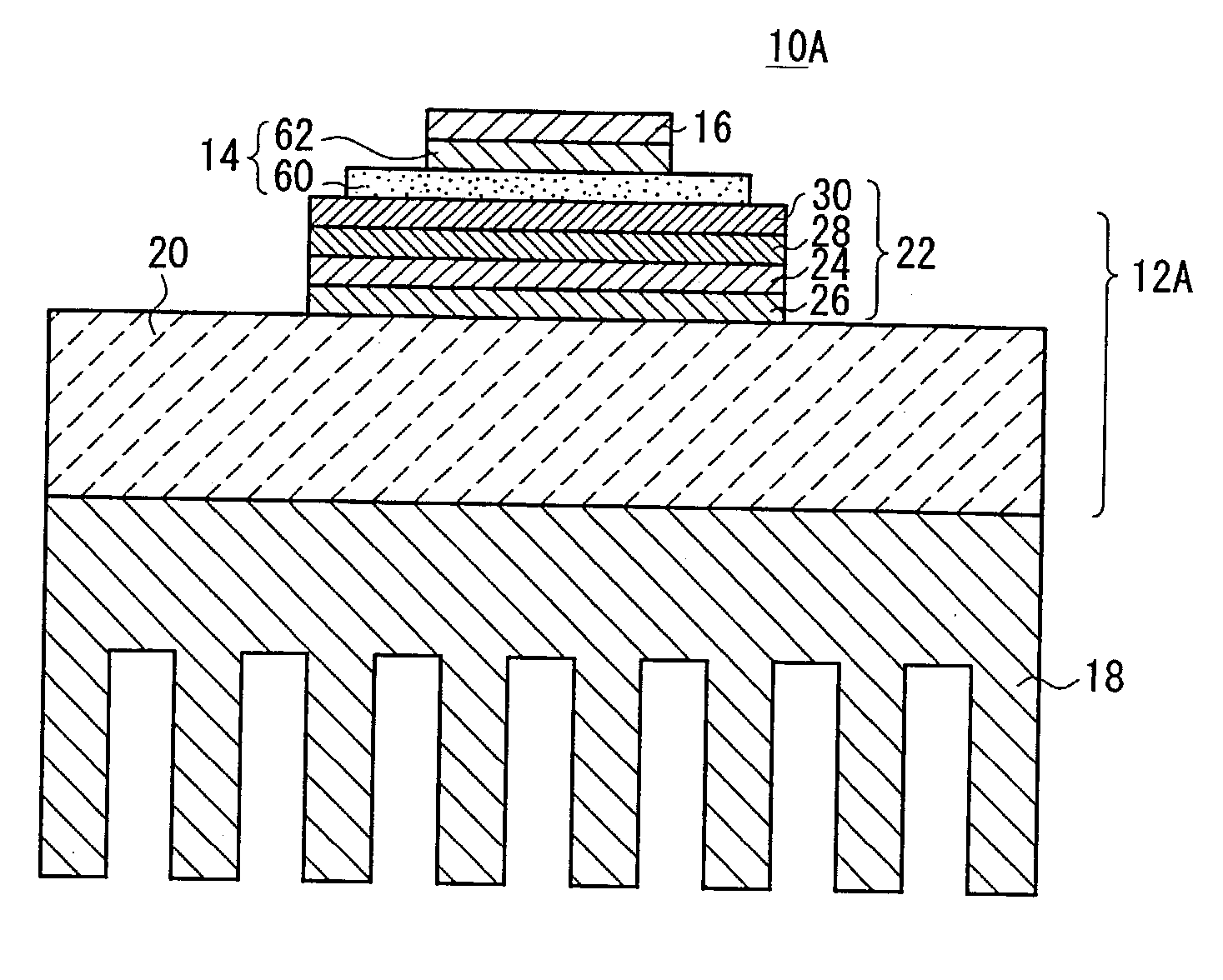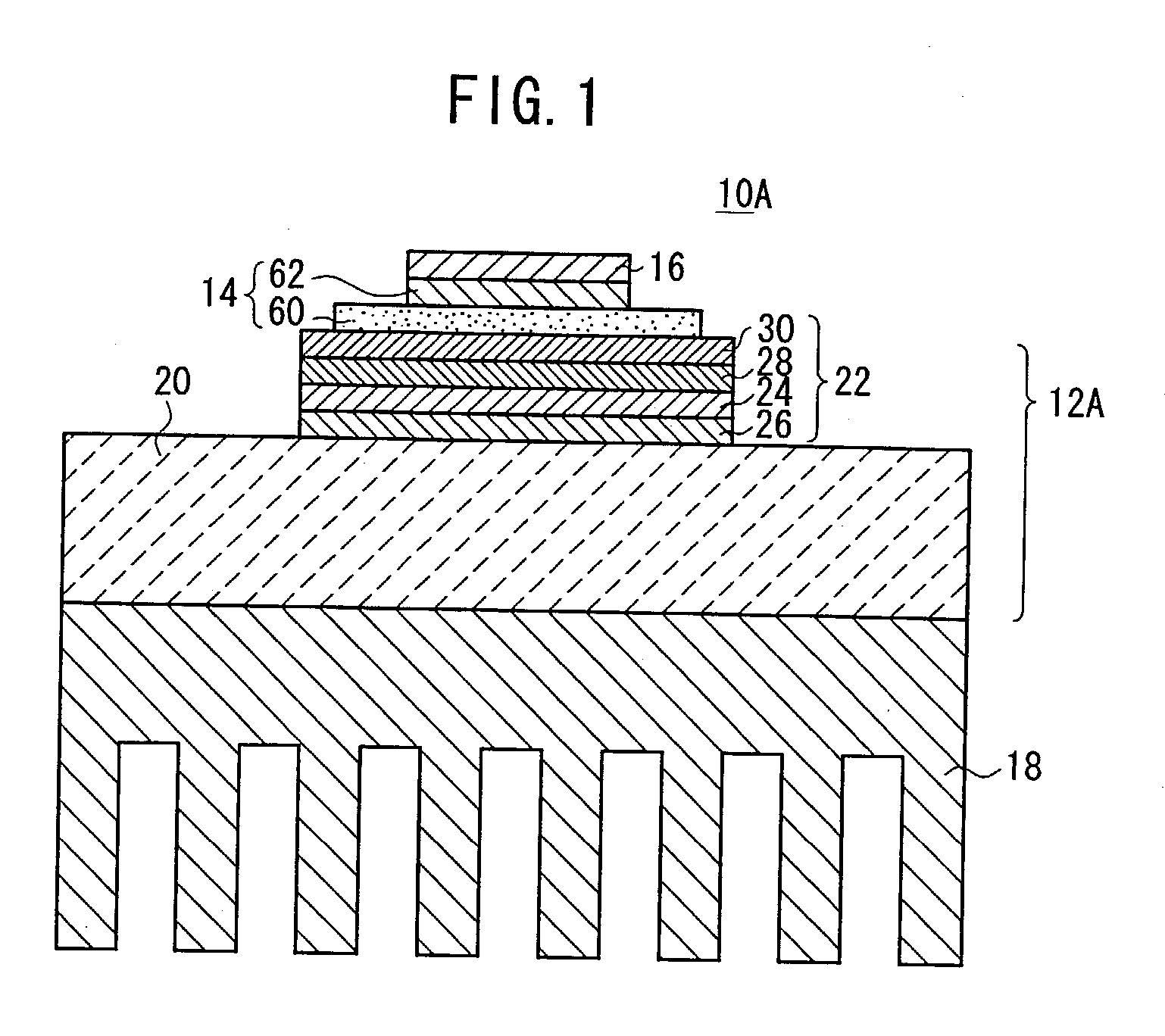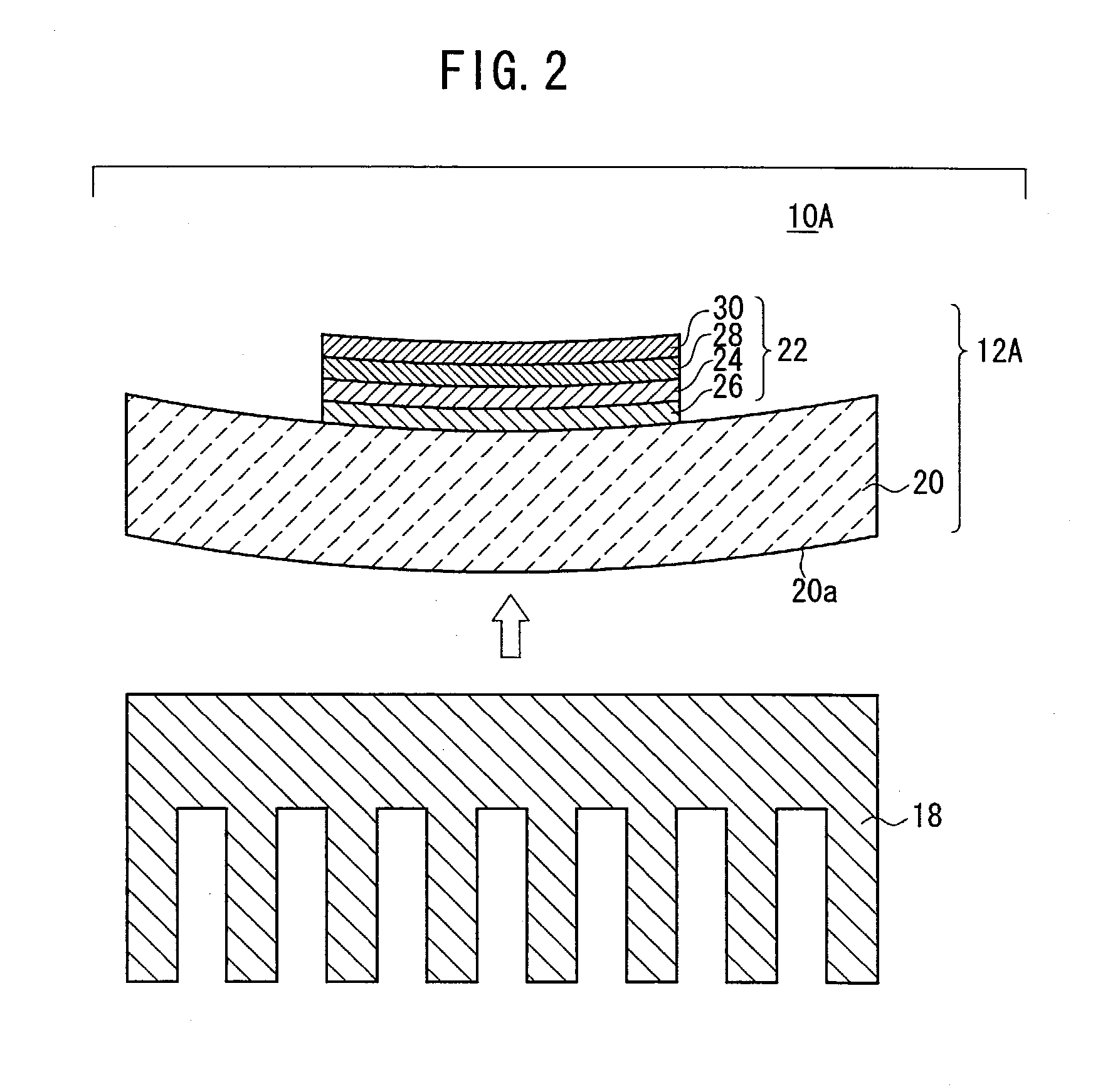Member for electronic circuit, method for manufacturing the member, and electronic part
a technology for electronic circuits and members, applied in the direction of printed circuit manufacturing, insulating substrate metal adhesion improvement, etc., can solve the problems of increasing the temperature of those semiconductor devices, the ineffectiveness of semiconductor devices to sufficiently radiate heat generated, and the large amount of electric energy consumed by transistors and semiconductor rectifiers per operating area, etc., to achieve the effect of reducing the number of manufacturing steps, reducing the manufacturing cost, and increasing reliability
- Summary
- Abstract
- Description
- Claims
- Application Information
AI Technical Summary
Benefits of technology
Problems solved by technology
Method used
Image
Examples
Embodiment Construction
, the insulating substrate 24 was an insulating substrate of AlN (aluminum nitride) having a coefficient of thermal conductivity of 180 W / mK, a size of 40.times.50 mm, and a thickness of 0.635 mm, the electrode 30 was an electrode of Cu (pure copper) having a size of 35.times.45 mm and a thickness of 0.30 mm, and the heat sink 20 was made of a C / Cu composite material having a size of 50.times.80 mm and a thickness of 3.0 mm.
[0100] The first and second joint members 26, 28, each in the form of a sheet of a commercial brazing material of Ag--Cu--Ti (Ag--35.25 Cu--1.75 Ti) having a thickness of 50 .mu.m, were placed respectively between the insulating substrate 24 and the heat sink 20 and between the electrode 30 and the insulating substrate 24. The assembly was then held in a vacuum of 0.00133 Pa at a given temperature (850.degree. C.) for 10 minutes, and then annealed, producing a joined assembly (the member 12A).
[0101] When the temperature was raised and lowered, the member 12A was ...
PUM
 Login to View More
Login to View More Abstract
Description
Claims
Application Information
 Login to View More
Login to View More - R&D
- Intellectual Property
- Life Sciences
- Materials
- Tech Scout
- Unparalleled Data Quality
- Higher Quality Content
- 60% Fewer Hallucinations
Browse by: Latest US Patents, China's latest patents, Technical Efficacy Thesaurus, Application Domain, Technology Topic, Popular Technical Reports.
© 2025 PatSnap. All rights reserved.Legal|Privacy policy|Modern Slavery Act Transparency Statement|Sitemap|About US| Contact US: help@patsnap.com



